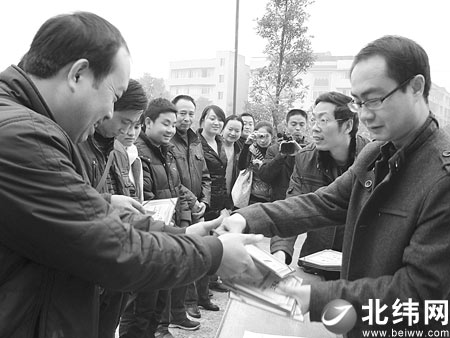What happens after the George Floyd protesters are arrested?
Right before Christmas 2014, police killed a Black 18-year-old, Antonio Martin, in Berkley, Missouri—two miles away from Ferguson. Josh Williams, also 18 at the time, had become a known and prominent activist in the protests that erupted over the murder of Michael Brown by a police officer in Ferguson. During the unrest, Williams was allegedly seen on camera taking chips and lighting a small fire in a QuikTrip trash can, which was quickly put out and caused no serious damage. He had no prior record. The judge sentenced him to 8 years, the longest sentence of any Ferguson protester.
Six years later Williams is still in prison. It’s clear that the severity of the charges have less to do with the actual property damage and more to do with an attempt to suppress social unrest and reassert power. In fact, that same year, a white man was sentenced to less time for setting a fire to the University of Missouri that resulted in over $1 million dollars in damage.
Now with the current wave of demonstrations against police violence over the last few weeks and a resurged Movement for Black Lives, at least 10,000 protesters across the country have already been arrested, many of whom are facing even more severe charges.
Two attorneys, Colinford Mattis and Urooj Rahman, were arrested for allegedly attempting to set an empty police car on fire. The car was in an isolated area and had already been vandalized. Yet after the federal government escalated the charges initially brought by state prosecutors, the two are now facing 45 years to life in prison. Droves of legal experts have questioned the use of federal law and intervention in the case. A federal appeals court has denied them bond and ordered that they be returned to jail. They currently await their next hearing from a notorious federal jail in Brooklyn.
Advertisement Advertisement Advertisement AdvertisementThe disproportionately harsh treatment of Mattis and Rahman is consistent with the recent push from the presidential administration’s for retributive crackdowns and draconian law-and-order.
Many people with little experience with the police have been shocked by the videos of police all over the country beating peaceful demonstrators with batons, gassing groups of people in the street, and shooting rubber bullets in their faces. But the violence in the streets is just the beginning for many of the people who have been arrested and detained in the protests.
We know what’s likely to happen next, because it’s happened before. During the Ferguson uprising, police and prosecutors engaged in mass arrests, often for arbitrary charges, and pursued harsh sentences, ostensibly to teach protesters a lesson. Since Ferguson, states have put forth at least 154 new laws and restrictions on protests, 54 of which have already been passed. In effect, police can take anything — such as a curfew violation — and arrest people, fabricate a resisting arrest or assault on an officer charge, and turn protesting into felony charges. (During recent protests against police violence, for example, a Temple University student was initially charged with assaulting an officer until video evidence emerged showing that the officer was the one beating him in the head with a baton, while another officer used his knee to forcibly press the student’s face into the pavement.) These charges are used to enhance cases and often lead to higher bail amounts and longer potential sentences. During trials, judges are often inclined to side with police and prosecutors.
Advertisement AdvertisementEven in relatively progressive districts, officials tend to justify punishment by distinguishing between “peaceful” and “violent” protests. In New York City, Manhattan District Attorney Cyus Vance has been lauded for declining to prosecute low-level protest related offenses while at the same time requesting the use of government power to indefinitely jail protesters involved in offenses such as looting and property damage. Governor Cuomo also pushed prosecutors to aggressively charge people arrested for looting during the protests. Drawing this line makes it easier to target activists while doing nothing for public safety. As Robin D.G. Kelley recently wrote in the New York Times, “What kind of society values property over Black lives?”
AdvertisementAny amount of time in jail or prison is destabilizing and dangerous, and protesters are often further targeted by courts, judges, and correctional officers seeking retaliation for the dissent. People have a degree of protection as long as they are surrounded by others in a crowd on the street. But when they are arrested and out of sight, they are vulnerable. Once protesters are taken into custody, police have plenty of opportunities for violence during transportation and jailing. Josh Williams and Ramsey Orta, who filmed police killing Eric Garner, have reported constant harassment and violence from police officers and prison guards.
Advertisement Advertisement AdvertisementThis treatment is common when it comes to Black movements, which tend to be seen and treated as severe threat. Just look at the violent and gratuitous repression of the Black Panthers, many of whom are still in prison or fugitives of the state after more than 40 years. Many Black Panthers were put in solitary confinement for years after trying to organize inside prison.
While Mattis and Rahman are facing life in prison as a result of federal intervention, some prosecutors across the country are dropping looting and rioting charges, largely a result of activists demanding that protesters not be further criminalized for protesting the police violence and injustice that gave rise to the unrest to begin with. Organizations, such as National Bail Out, have already been bailing out and providing legal support for protesters.
AdvertisementRecently in Jurisprudence
- After a Rough Week of Testimony, Stormy Daniels Seems to Have the Upper Hand
- It’s a Big Deal That the Government Is Rescheduling Marijuana. It’s Still Too Little, Too Late.
- I Watched Trump’s Lawyers Cross-Examine Stormy Daniels. It Was Painful.
- The Big Problem With Marilyn Mosby’s Innocence Campaign
But the reality is that the carceral state has far too much power to punish whomever it wants. The police violence caught on video in the streets is reproduced in jails, courts, and prisons all over the country.
The violence will not stop without sustained effort to dramatically shrink and eventually abolish prisons and police in favor of alternatives that actually center safety and accountability, not punishment and control. Defunding police, wide-spread decriminalization, freeing people from jails and prisons, reducing contact between police and the public, and reinvesting funds in community resources and alternative safety interventions are essential pathways forward.
Carceral harm will devastate the lives of many without intervention and support. There must be a continued push to demand jurisdictions drop all charges against protesters. We must not forget protesters once the crowds subside, or try to draw lines between “peaceful demonstrators” and “violent rioters” who deserve what they get. We cannot forget Josh Williams, who would be out protesting today if he were free.
Update, June 29, 2020: This article has been updated to clarify Williams’ role in Ferguson activism.
Tweet Share Share Comment相关文章

Kamala Harris’ ridiculous problem with the political press.
Last Thursday, standing on the tarmac in Michigan in front of Air Force Two, Kamala Harris took some2024-09-22
Klopp at a loss to explain ‘unacceptable’ Liverpool form
WOLVERHAMPTON:Jurgen Klopp branded the goals Liverpool conceded in a 3-0 defeat to Wolves as "h2024-09-22 为获奖者颁奖27日,荥经县严道二小的校园里热闹非凡,荥经县中小学教师技能“大比武”活动在这里举行。来自全县各学校的107名教师在这里进行了教师技能“大比武”,各学校的校领导和青年教师参加了观摩。自制教2024-09-22
为获奖者颁奖27日,荥经县严道二小的校园里热闹非凡,荥经县中小学教师技能“大比武”活动在这里举行。来自全县各学校的107名教师在这里进行了教师技能“大比武”,各学校的校领导和青年教师参加了观摩。自制教2024-09-22
南繁“上游”的一条虾,扛起“打赢水产种业翻身仗”大旗!海南这条虾苗供应全国!
南繁“上游”的一条虾,扛起“打赢水产种业翻身仗”大旗!海南这条虾苗供应全国!_南方+_南方plus海南坐拥约两百万平方公里的广阔海域,为水产南繁种业的发展提供了得天独厚的自然优势。在2023年,海南的2024-09-22
Sinner vs. Michelsen 2024 livestream: Watch US Open for free
TL;DR:Live stream Sinner vs. Michelsen in the 2024 US Open for free on 9Now or TVNZ+. Access these f2024-09-22
Mashable just broke the Guinness World Record for tallest stack of tortillas and YUM
SXSW 2017 is upon us and Mashablekicked things off by making history ... with tortillas.During Day O2024-09-22

最新评论